1.
Introduction
A metric space M=(X,d) is formed by a set X of points and a distance d defined in X. In particular, the vertex set of any connected graph, equipped with the shortest path distance, is a metric space. This suggests approaching problems related to metric parameters in graphs as more general problems in the context of metric spaces. In some cases, a problem has been formulated within the theory of metric spaces and has become popular and extensively studied in graph theory. This is the case of the metric dimension: a theory suggested by Blumenthal [3] in 1953 in the general context of metric spaces that became popular more than twenty years later, after being introduced by Slater [15,16] in 1975 and by Harary and Melter [8] in 1976, in the particular context of graph theory. Some graph operations have been extensively studied and then generalized to the case of metric spaces. For instance, the notion of the join of two graphs was extended to metric spaces by Beardon and Rodríguez-Velázquez [2], while the notion of the lexicographic product of two graphs was extended to metric spaces by Rodríguez-Velázquez [12]. In other cases, like the Cartesian product of graphs, and the Cartesian product of metric spaces, the theory has been widely studied in both contexts.
In this paper, we consider the study of corona metric spaces as a natural generalization of the theory of corona product graphs. In particular, we define the concept of a corona metric space in such a way that the set of vertices of any corona product graph, equipped with the shortest path distance, is a corona metric space. We study some basic properties of corona metric spaces, such as completeness, boundedness, compactness and separability. Furthermore, we provide necessary and sufficient conditions for the existence of universal lines in these metric spaces, and we obtain a formula for the metric dimension.
The remainder of the article is structured as follows. In Section 2 we define the concept of a corona metric space, and we also justify the terminology used. In Section 3 we briefly describe the notion of a gravitational metric space, since the properties of these spaces are closely linked to the properties of corona metric spaces. Section 4 is devoted to the study of basic properties of these metric spaces. In Section 5 we study the metric dimension, while in Section 6 we discuss the existence of universal lines.
We assume that the reader is familiar with the basic concepts and terminology of metric spaces. If this is not the case, we suggest the textbooks [10,11].
2.
Corona metric spaces: Definition
In this section we will establish the notation and terminology related to corona metric spaces. Given a metric space M=(X,d) and a point x∈X, we define the nearness of x to be
We define the nearness of the metric space to be
Notice that the vertex set V(G) of any connected graph G, equipped with the shortest path distance, is a metric space with nearness equal to one.
Next, we introduce the concept of a corona metric space.
Definition 2.1. Let M=(X,dX) be a metric space with 0<η(M)<+∞ and M be a family of pairwise disjoint metric spaces such that there exists a bijection f:X⟶M. Let f(x)=Mx=(Xx,dXx) for every x∈X, and
Let dU:U×U⟶R be the map defined by
The map dU is called a corona distance, and the metric space M⊙fM=(U,dU) is called a corona metric space.
One can easily check that dU is a distance function. For this, by the definition of dU, it is only necessary to check the triangular inequality dU(x,z)≤dU(x,y)+dU(y,z) by differentiating cases according to the positions of x,y and z in the set U. We omit the details.
Notice that the requirement η(M)<+∞ is needed, as inf∅=+∞. Hence, if |X|=1, then η(M)=+∞. Therefore, the requirement η(M)<+∞ is equivalent to |X|≥2. Moreover, when defining dU, we really could have used another positive constant instead of η(x). The convenience of using η(x) lies in keeping the points of Mx at the same distance from x as the closest point to x in X, by analogy with what happens in graph theory for the case of corona graphs.
The name corona metric space is inherited from graph theory. Let us briefly describe this idea. Let G be a connected graph, H be a family of pairwise disjoint graphs with |H|=|V(G)| and g:V(G)⟶H be a bijection. Let g(x)=Hx for every x∈V(G). We define the generalized corona graph G⊙gH as the graph obtained from G, H and g, by taking one copy of G and one copy of each graph in H, and making x adjacent to every vertex of g(x)=Hx for every x∈V(G). Notice that G⊙gH is connected if and only if G is connected. Now, if there exists a graph H such that g(x)=Hx is isomorphic to H for every x∈V(G), then G⊙gH≅G⊙H is a standard corona graph, as defined in 1970 by Frucht and Harary [7].
It is not difficult to check that if G is a connected graph, and |V(G)|≥2, then the metric space induced by any generalized corona graph G⊙gH is a corona metric space M⊙fM, thus justifying the terminology used. To see this, we only need to take M=(X,dX)=(V(G),dG) and f(x)=Mx=(Xx,dXx)∈M for every x∈V(G), where Xx=V(Hx) and dXx(y,y′)=min{2,dHx(y,y′)} for every y,y′∈V(Hx). As we can expect, if there exists x∈V(G) such that the graph g(x)=Hx is not connected, then we assume that dHx(y,y′)=+∞ for every pair of vertices y and y′ belonging to different components of Hx, and so dXx(y,y′)=min{2,dHx(y,y′)}=min{2,+∞}=2.
3.
Gravitational metric spaces
In this section we will establish the notation and terminology related to gravitational metric spaces. By the definition of a corona metric space, for any x∈X, the metric subspace M∗x=(Xx,d∗x) of M⊙fM, induced by the set Xx, is equipped with the distance function
These metric spaces play an important role in the study of join metric spaces [2] and in the study of lexicographic metric spaces [12]. In fact, as described in [12], the metric space M∗x is isometric to a metric space obtained from Mx, which can be seen as a deformation of Mx where every point a∈Xx attracts (and is attracted by) every point that is outside the closed ball of center a and radius 2η(x). All these points remain at distance 2η(x) from a in the deformed space. In particular, if the diameter of Mx is at most 2η(x), then M∗x is isometric to Mx. The metric space M∗x locally, near every point, looks like patches of the space Mx, but the global topology can be quite different.
In order to preserve the terminology used in [12], we will refer to M∗x=(Xx,d∗x) as the gravitational metric space associated to M=(Xx,dXx) with gravitation constant 2η(x). In fact, it is possible to develop the theory of corona metric spaces with an arbitrary gravitational constant. Obviously, the gravitational constant is always a positive number.
Furthermore, apart from the theory of corona metric spaces and apart from theory of lexicographic metric spaces developed in [12], the theory of gravitational metric spaces has its own identity, as for any real number t>0 and any metric space M=(X,dX), we can define the gravitational metric space M∗=(X,d∗) associated to it, where the distance function d∗ is defined using both, the distance function dX and the gravitational constant t:
4.
Basic properties
The discrete metric d0 on a non-empty set X is given by d0(x,y)=0 if x=y, and d(x,y)=1 otherwise. In fact, M=(X,d0) is isometric to the metric space induced by a complete graph with vertex set X.
There are metric spaces with metrics that may differ from the discrete metric but generate the same topology. These metric spaces are known as discrete metric spaces [11]. In order to avoid misunderstandings regarding this concept, we will highlight this fact in the following definition.
Definition 4.1. [11] A metric space M is called a discrete metric space if and only if all its subsets are open (and therefore closed) in M.
For instance, the set N of positive integers with its usual metric inherited from the one-dimensional Euclidean space R is a discrete metric space, the vertex set of any graph equipped with the shortest path distance is a discrete metric space, and, in particular, every finite metric space is a discrete metric space.
Theorem 4.1. [12] Let M=(X,d) be a metric space. If η(M)>0, then M is a complete discrete metric space.
The next result is a criterion for completeness of any gravitational metric space.
Theorem 4.2. [12] A metric space is complete if and only if its gravitational metric space, with any gravitational constant, is complete.
We proceed to show that the completeness of M⊙fM is equivalent to the completeness of all the metric spaces of the family M∪{M}.
Theorem 4.3. A corona metric space M⊙fM is complete if and only if M is complete and every Mx∈M is complete.
Proof. By definition of a corona metric space, η(M)>0, and by Theorem 4.1, M is a complete metric space. Hence, we proceed to show that the corona metric space M⊙fM is complete if and only if every metric space Mx∈M is complete.
We first assume that Mx∈M is complete for every x∈X. Let (zn)n∈N be a Cauchy sequence in M⊙fM. Obviously, we only need to discuss the case in which this sequence is not eventually constant. By the definition of a Cauchy sequence, for every ϵ∈(0,η(M)) there exists n′∈N such that dU(zn,zm)<ϵ for every n,m>n′. Now, by the definition of nearness, we conclude that there exists x∈X such that zn∈Xx for every n>n′. Thus, ϵ>dU(zn,zm)=min{2η(x),dXx(zn,zm)}, for every n,m>n′. Let (yn)n∈N be the Cauchy sequence defined by yn−n′=zn, for every n>n′. By Theorem 4.2, the gravitational metric space M∗x is complete, and so (yn)n∈N converges in M∗x. Now, since M∗x is the subspace of M⊙fM induced by Xx, we conclude that (zn)n∈N converges in M⊙fM. Therefore, M⊙fM is a complete metric space.
Conversely, assume that M⊙fM is a complete metric space. Let (yn)n∈N be a Cauchy sequence in Mx, for Mx∈M. Hence, for every ϵ∈(0,η(x)) there exists n′∈N such that dU(yn,ym)=dXx(yn,ym)<ϵ for every n,m>n′. This implies that (yn)n∈N is a Cauchy sequence in M⊙fM, which is convergent, by the completeness of M⊙fM. Now, since dU(a,b)≥η(x)>ϵ for every a∈Xx and b∈U∖Xx, we can conclude that (yn)n∈N converges in Mx. Therefore, Mx is a complete metric space, for every Mx∈M.
The concept of boundedness plays an important role in the theory of metric spaces. Whereas a metric space is bounded if it is included in a single ball, a metric space M=(X,d) is totally bounded if for every ϵ>0 there exists a finite set S⊆X such that X=∪s∈SBϵ(s), where
is the ball of center s and radius ϵ. Since the finite union of bounded sets is bounded, every totally bounded space is bounded. In general, the converse is not true.
Theorem 4.4. [12] A metric space is totally bounded if and only if its gravitational metric space, with any gravitational constant, is totally bounded.
We proceed to show that the total boundedness of M⊙fM is equivalent to the total boundedness of all the metric spaces of the family M whenever M is a finite metric space.
Theorem 4.5. A corona metric space M⊙fM, with M=(X,d), is totally bounded if and only if |X|<+∞ and Mx is totally bounded for every x∈X.
Proof. Recall that U=X∪(⋃x∈XXx) is the set of points of M⊙fM. Let 0<ϵ<η(M)/2 and S⊆U such that U=∪s∈SBϵ(s). Since Bϵ(x)={x} for every x∈X, Bϵ(y)∩Bϵ(y′)=∅ for every y∈Xx, and y′∈U∖Xx, we can conclude that |S|<+∞ if and only if (a) |X|<+∞ and (b) for each x∈X there exists Sx⊆S∩Xx such that |Sx|<+∞ and Xx=∪s∈SxBϵ(s). Notice that (b) is equivalent to saying that the gravitational metric space M∗x is totally bounded for every x∈X. Therefore, by Theorem 4.4 we conclude the proof.
In order to study the compactness of corona metric spaces, we need to recall the following known theorem, which is a characterization of compact metric spaces, and is a generalization of the Heine-Borel theorem.
Theorem 4.6. [10] A metric space is compact if and only if it is complete and totally bounded.
Our next result is a direct consequence of Theorems 4.3, 4.5 and 4.6.
Theorem 4.7. A corona metric space M⊙fM, with M=(X,d), is compact if and only if |X|<+∞ and Mx is compact for every x∈X.
A set S of points of a metric space M is dense in M if every open ball of M contains at least a point belonging to S. A metric space M is separable if there exists a countable set of points which is dense in M.
Theorem 4.8. [12] A metric space is separable if and only if its gravitational metric space, with any gravitational constant, is separable.
Next, we proceed to study the separability of M⊙fM.
Theorem 4.9. A corona metric space M⊙fM, with M=(X,d), is separable if and only if X is a countable set and Mx is separable for every x∈X.
Proof. We proceed to show that M⊙fM is separable if and only if X is a countable set and for any x∈X the gravitational metric space M∗x is separable. After that, the proof is concluded by Theorem 4.8.
We first assume that X is a countable set, and the gravitational metric space M∗x is separable for every x∈X. Let Sx⊆Xx be a countable set which is dense in M∗x. Notice that S=X∪(∪x∈XSx) is a countable set, as the countable union of countable sets is countable. Now, a ball Bϵ(y) in M∗x will be distinguished from a ball Bϵ(y) in M⊙fM by the bold type used. Since Sx is dense in M∗x, we can conclude that for any ϵ>0 and y∈Xx,
Hence, S=X∪(∪x∈XSx) is dense in M⊙fM, and so M⊙fM is separable.
Conversely, assume that M⊙fM is separable. Since every subspace of a separable metric space is separable, we can conclude that M∗x is separable for every x∈X. Finally, if W is a countable set which is dense in M⊙fM, then for any x∈X and y∈Xx, we have Xx⊇Bη(M)/2(y)∩W≠∅, which implies that |X|≤|W|. Therefore, X is a countable set.
In the next section we will see that the above results have interesting applications.
5.
The metric dimension
The notion of the metric dimension of a general metric space was introduced for the first time in 1953 by Blumenthal [3] in his book Theory and Applications of Distance Geometry. This theory attracted little attention until, more than twenty years later, it was applied to the particular case of graphs [8,15,16]. Since then, it has been frequently applied and investigated in graph theory and many other disciplines. More recently, in [1,2,9,12], the theory of metric dimension was developed further for general metric spaces. In this section, we study the metric dimension of corona metric spaces.
Let M=(X,d) be a metric space. If X is an infinite set, we put |X|=+∞. In fact, it is possible to develop the theory with |X| any cardinal number, but we shall not do this. A subset A⊆X is said to resolve M if for any pair of different points x,y∈X, there exists a point a∈A such that d(x,a)≠d(y,a). Informally, if an object in M knows its distance from each point of A, then it knows exactly where it is located in M. The class R(M) of subsets of X that resolve M is non-empty, since X resolves M. The metric dimension dim(M) of M=(X,d) is defined as
The sets in R(M) are called the metric generators of M, and A is a metric basis of M if A∈R(M) and |A|=dim(M).
This terminology comes from the fact that a metric generator of a metric space M=(X,d) induces a global co-ordinate system on M. For instance, if (x1,…,xr) is an ordered metric generator of M, then the map ψ:X→Rr given by
is injective, which implies that the map ψ is a bijection from X to a subset of Rr, and the metric space inherits its co-ordinates from this subset. As the following result shows, a stronger conclusion arises when M is a compact metric space.
Theorem 5.1. [2] If M is a compact metric space with dim(M)=r<+∞, then M is homeomorphic to a compact subspace of the Euclidean spaceRr.
According to the following result, the boundedness of M affects directly the metric dimension of its gravitational metric spaces.
Remark 5.2. [6] Let M be a metric space and M∗ be its gravitational metric space for an arbitrary gravitational constant. If M is unbounded, then dim(M∗)=+∞.
In general, the converse of Remark 5.2 does not hold. To see this, it is enough to consider M=(R,d0), where d0 is the discrete metric. In such a case, dim(M∗)=+∞ and M is bounded.
Theorem 5.3. Let M⊙fM be a corona metric space. If X is the set of points of M, and every metric space in M has at least two points, then
Proof. Notice that, by the definition of a corona metric space, 0<η(M)<+∞, and so |X|≥2. Let W be a metric basis of M⊙fM and let Wx=W∩Xx for every x∈X. Since for every u,v∈Xx and every a∈U∖Xx
we deduce that Wx is a metric generator of the subspace of M⊙fM induced by Xx, which coincides with the gravitational metric space M∗x, and so |Wx|≥dim(M∗x). Hence, if dim(M∗x)=+∞ for some x∈X, or |X|=+∞, then dim(M⊙fM)=+∞, and the result follows. From now on, assume that |X|<+∞ and dim(M∗x)<+∞ for every x∈X. Thus,
It remains to show that
To this end, we proceed to show that if Ax is a metric basis of M∗x for every x∈X, then A=∪x∈XAx is a metric generator for M⊙fM. We differentiate the following cases for u,v∈U∖A, where u≠v.
Case 1. u,v∈Xx, for some x∈X. Since Ax is a metric basis of M∗x=(Xx,d∗x), there exists a∈Ax such that
Case 2. u∈X and v∈Xu. In this case, for every x∈X∖{u} and a∈Ax,
Case 3. u∈X and v∈Xx, where x∈X∖{u}. For any a∈Au,
Case 4. u∈Xx and v∈Xx′, for some pair of different points x,x′∈X. Since η(x)≤dX(x,x′), for any a∈Ax we deduce that
Case 5. u,v∈X. In this case, for every a∈Au we have
According to the five cases above, A is a metric generator of M⊙fM, and so
Therefore, the result follows.
The following result is a direct consequence of Theorem 5.3.
Corollary 5.4. Let M⊙fM be a corona metric space such that every metric space in M has at least two points. If |M|=+∞, or there exists Mx∈M such that dim(M∗x)=+∞, thendim(M⊙fM)=+∞.
By combining Theorems 4.7, 5.1 and 5.3, we deduce the following result.
Theorem 5.5. Let M⊙fM be a corona metric space such that |M|<+∞, every metric space Mx∈M has at least two points, and dim(M∗x)<+∞. Let m=∑Mx∈Mdim(M∗x). If every Mx∈M is a compact metric space, then M⊙fM is homeomorphic to a compact subspace of the Euclidean space Rm.
We conclude this section with the following theorem, which is another interesting result on compact metric spaces.
Theorem 5.6. Let M⊙fM be a corona metric space such that every metric space Mx∈M has at least two points. If M⊙fM is a compact metric space, and dim(M⊙fM)<+∞, then the following statements hold.
(ⅰ) For any Mx∈M, the gravitational metric space M∗x is homeomorphic to a compact subspace of the Euclidean space Rmx, where mx=dim(M∗x).
(ⅱ) Every metric space Mx∈M is homeomorphic to a compact subspace of the Euclidean space Rnx, where nx=dim(Mx)≤dim(M∗x).
Proof. Let Mx∈M and dim(M∗x)=mx. By Theorems 4.2, 4.4 and 4.6, we have that M∗x is compact if and only if Mx is compact. On the other hand, if M⊙fM is compact, then Mx is compact, by Theorem 4.7. In summary, from the compactness of M⊙fM, we infer the compactness of M∗x. Now, if dim(M⊙fM)<+∞, then Theorem 5.3 leads to dim(M∗x)<+∞. Therefore, by Theorem 5.1 we complete the proof of (ⅰ).
In order to prove (ⅱ), notice that if a point distinguishes two elements in M∗x, it also distinguishes them in Mx, which implies that dim(Mx)≤dim(M∗x)<+∞. Finally, since Mx is compact, by Theorem 5.1 we complete the proof.
6.
Universal lines
Let M=(X,dX) be a metric space. Given two different points x,x′∈X, we define
A line LM{x,x′} induced by two distinct points x,x′∈X is defined by
A line LM{x,x′} is universal whenever LM{x,x′}=X.
The following conjecture was stated by Chen and Chvátal [4] for the case of finite metric spaces, where ℓ(M) denotes the number of distinct lines in M.
Conjecture 6.1. (The Chen-Chvátal conjecture, [4]) Every finite metric space M=(X,dX) with at least two points either has a universal line or ℓ(M)≥|X|.
The Chen-Chvátal conjecture is an attempt to generalize the de Bruijn-Erdős theorem of Euclidean geometry, which asserts that every noncollinear set of n points in the plane determines at least n distinct lines.
The Chen-Chvátal conjecture remains open, and, as time goes by, the interest of mathematicians in solving it is increasing. Recently, Chvátal [5] described the main progress related to the conjecture and pointed out twenty-nine related open problems plus three additional conjectures. As one might expect, the paper highlights the existence of some families of metric spaces for which the conjecture has been solved.
Recently, Rodríguez-Velázquez [13] has solved the conjecture for some particular classes of metric spaces. Among other results, he has shown that if M⊙fM=(U,dU) is a finite corona metric space, where η(x)=1 for every point x of M, then either M⊙fM has a universal line or ℓ(M⊙fM)≥|U|.
The problem of investigating the properties of (finite or infinite) metric spaces having a universal line is interesting. In the case of a finite metric space M=(X,dX), the problem remains interesting even if we can check that ℓ(M)≥|X|. Recently, Rodríguez-Velázquez [14] discussed the problem for the particular case of metric spaces induced by graphs, including the case of metric spaces induced by corona graphs. In this section we analyse the problem for the general class of not necessarily finite corona metric spaces.
To begin with, we need to introduce the following notation. The diameter of a metric space M=(X,dX) is defined to be
Theorem 6.2. Let M⊙fM be a corona metric space and X the set of points of M. Then M⊙fM has a universal line if and only if at least one of the following conditions holds.
(ⅰ) There exist x∈X and y∈Xx such that either Xx={y} or dXx(y,z)≥2η(x) for every z∈Xx∖{y}.
(ⅱ) There exist two different points x,x′∈X such that [x,x′]={x,x′}, and the line LM{x,x′} is universal.
Proof. Observe that, by Definition 2.1, |X|≥2, as 0<η(M)<+∞. First, assume that (ⅰ) holds.
If there exists x∈X such that |Xx|=1, say Xx={y}, then for any z∈U∖{x,y}, we have that x∈[y,z], as
Therefore, the line LM⊙fM{x,y} is universal.
On the other hand, if there exists y∈Xx such that dXx(y,z)≥2η(x) for every z∈Xx∖{y}, then
while for every z′∈U∖(XX∪{x}) we have that x∈[y,z′], as
Therefore, the line LM⊙fM{x,y} is universal.
Now, assume that (ⅱ) holds. Let x,x′∈X be two different points such that [x,x′]={x,x′} and the line LM{x,x′} is universal. In this case, for any x″∈X, either x∈[x′,x″] or x′∈[x,x″], which implies that for any z∈{x″}∪Xx″, either x∈[x′,z] or x′∈[x,z]. Therefore, the line LM⊙fM{x,x′} is universal.
Conversely, assume that there exist two points u,v∈U such that the line LM⊙fM{u,v} is universal. We differentiate the following cases.
Case 1. u,v∈X. Since X⊆LM⊙fM{u,v}, we conclude that the line LM{u,v} is universal. Now, suppose that there exists z∈[u,v]∖{u,v}. Since for any w∈Xz,
and also
we obtain that w∉LM⊙fM{u,v}, which is a contradiction. Therefore, (ⅱ) follows.
Case 2. u,v∈Xx for some point x∈X. Notice that U∖(Xx∪{x})≠∅, as |X|≥2. Thus, for any z∈U∖(Xx∪{x}),
i.e., dU(u,z)≥dU(u,v) and dU(v,z)≥dU(u,v), and so z∉LM⊙fM{u,v}, which is a contradiction. Therefore, this case does not occur.
Case 3. u∈X and v∈Xu. If Xu={v}, then (ⅰ) follows. Now, if |Xu|≥2, then for any v′∈Xu∖{v} we have dU(u,v′)=dU(u,v)=η(u), and so v′∉[u,v]={u,v}, v∉[u,v′]={u,v′} and v′∈LM⊙fM{u,v}, which implies that u∈[v,v′]. As a result,
Therefore, (ⅰ) follows.
Case 4. u∈Xx and v∈Xx′ for two distinct points x,x′∈X. Suppose that there exists u′∈Xx∖{u}. In this case,
which contradicts that u′∈LM⊙fM{u,v}. Therefore, Xx={u}, and so (ⅰ) follows.
Case 5. u∈X and v∈Xx for some point x∈X∖{u}. Suppose that there exists v′∈Xx∖{v}. In this case,
which contradicts that v′∈LM⊙fM{u,v}. Therefore, (ⅰ) follows.
According to the five cases above, the proof is complete.
The following result is a particular case of Theorem 6.2.
Corollary 6.3. Let M⊙fM be a corona metric space and X be the set of points of M. If 1≤D(Mx)<2η(x) for every x∈X, then the following statements are equivalent.
(ⅰ) M⊙fM has a universal line.
(ⅱ) There exist two different points x,x′∈X such that [x,x′]={x,x′} and the line LM{x,x′} is universal.
A metric space (Y,dY) is metrically convex, or convex in the sense of Menger, if for all different points u,v∈Y there exists w∈Y such that w∈[u,v]∖{u,v}, i.e., dY(u,v)=dY(u,w)+dY(w,v).
It is not difficult to check that the following result follows from Theorem 6.2.
Corollary 6.4. Let M⊙fM be a corona metric space and X be the set of points of M. If |Xx|≥2, and the gravitational metric space M∗x is metrically convex for every x∈X, then the following statements are equivalent.
(ⅰ) M⊙fM has a universal line.
(ⅱ) There exist two different points x,x′∈X such that [x,x′]={x,x′}, and the line LM{x,x′} is universal.
Proof. We only need to observe that if |Xx|≥2, and the gravitational metric space M∗x is metrically convex for every x∈X, then condition (ⅰ) in Theorem 6.2 does not hold.
In Section 4 we learned that the gravitational metric space M∗x, associated to a metric space Mx, inherits several properties from Mx. For instance, Theorem 4.2 states that the completeness is one of these hereditary properties. It is not difficult to check that, if M∗x has gravitational constant η(x)<D(Mx)2, then the convexity of Mx in the sense of Menger is not inherited by M∗x, and neither is it inherited when Mx is a complete metric space. Even so, we will show how to obtain a result in the direction of Corollary 6.4, in which we impose the convexity on Mx instead of imposing it on M∗x. However, in return we will have to impose the completeness on Mx. In short, to obtain the result we will not need M∗x to inherit the convexity of Mx.
One of our main tools will be the Menger theorem on complete and metrically convex metric spaces. First, let us recall that a subset S of points of a metric space (X,d) is called a metric segment between two distinct points x,y∈X if there exist a closed interval [a,b] on the real line and an isometry λ:[a,b]⟶S such that λ([a,b])=S, λ(a)=x, and λ(b)=y.
Theorem 6.5 (Menger). Each two distinct points of a complete and metrically convex metric space are joined by a metric segment of the space.
The following result is obtained by combining Theorems 6.2 and 6.5.
Theorem 6.6. Let M⊙fM be a corona metric space and X be the set of points of M. If |Xx|≥2 and Mx is a complete and metrically convex metric space for every x∈X, then the following statements are equivalent.
(ⅰ) M⊙fM has a universal line.
(ⅱ) There exist two different points x,x′∈X such that [x,x′]={x,x′}, and the line LM{x,x′} is universal.
Proof. For any x∈X, assume that |Xx|≥2, and Mx is a complete and metrically convex metric space. By Theorem 6.2, we only need to prove that for any y∈Xx there exists z∈Xx∖{y} such that dXx(y,z)<2η(x).
To this end, let y,y′∈Xx be two distinct points of Mx, and let t=dXx(y,y′). By Theorem 6.5, there exists a metric segment Sy,y′⊆Xx with endpoints y,y′, i.e., there exists an isometry λ:[0,t]⟶Sy,y′ such that λ(0)=y and λ(t)=y′. Hence, for any 0<t′<min{t,2η(x)}, there exists z∈Sy,y′∖{y,y′} such that λ(t′)=z, and, as a result, dXx(y,z)=t′<2η(x). Therefore, the result follows.
7.
Conclusions
In this paper, we have introduced the study of corona metric spaces as a natural generalization of the theory of corona product graphs. In particular, the concept of a corona metric space was defined in such a way that the set of vertices of any corona product graph, equipped with the shortest path distance, is a corona metric space.
An important role in this theory is played by the gravitational metric spaces, as many properties of the corona metric spaces are discussed on the basis of properties of the gravitational metric spaces. In particular, we have considered basic properties including completeness, boundedness, compactness and separability. Furthermore, we have obtained a formula for the metric dimension of a corona metric space, and we have derived some results linking the metric dimension with some properties discussed previously. Finally, we have obtained necessary and sufficient conditions for the existence of universal lines in corona metric spaces.
Conflict of interest
The author declare that he has no conflict of interest.











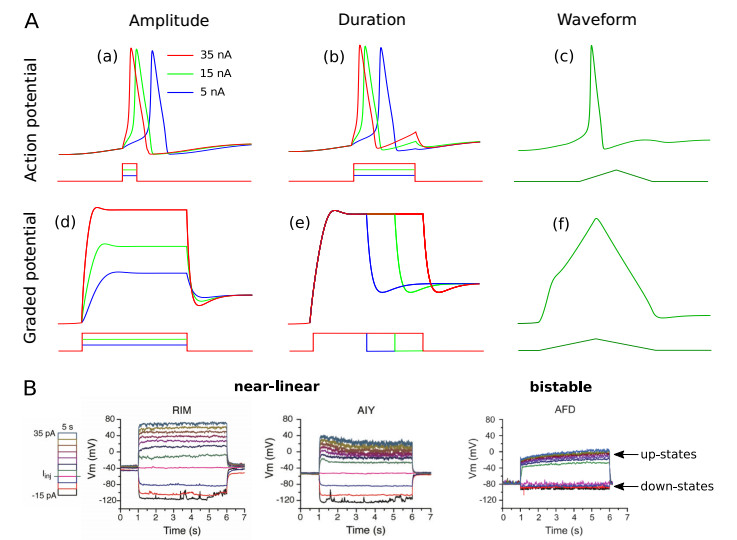
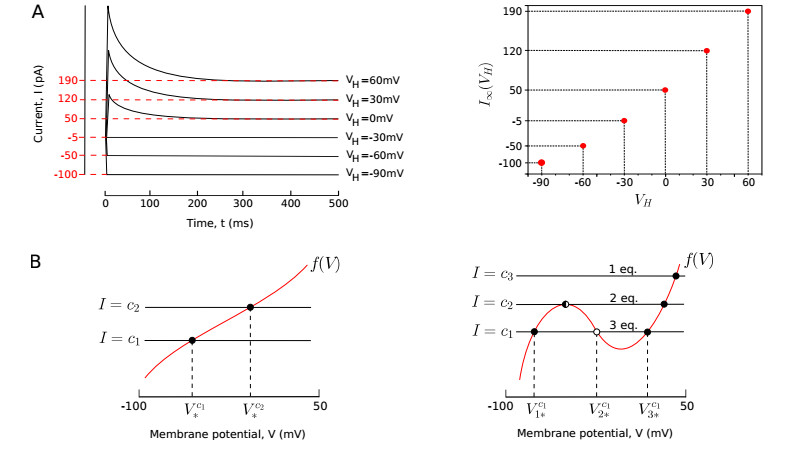
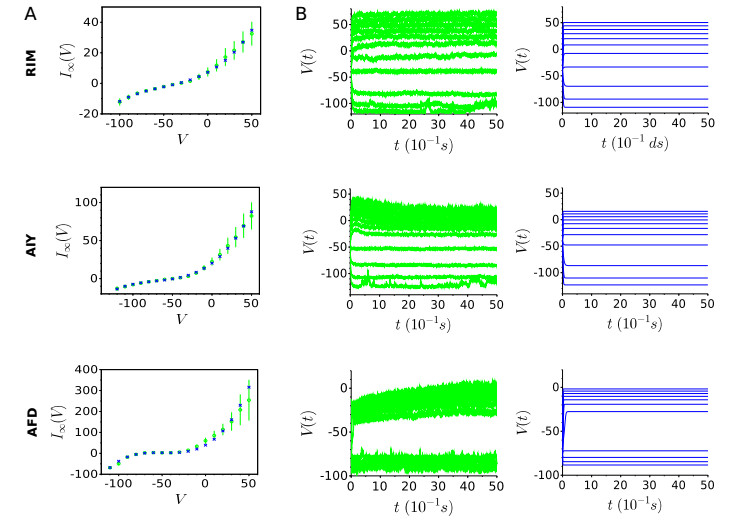
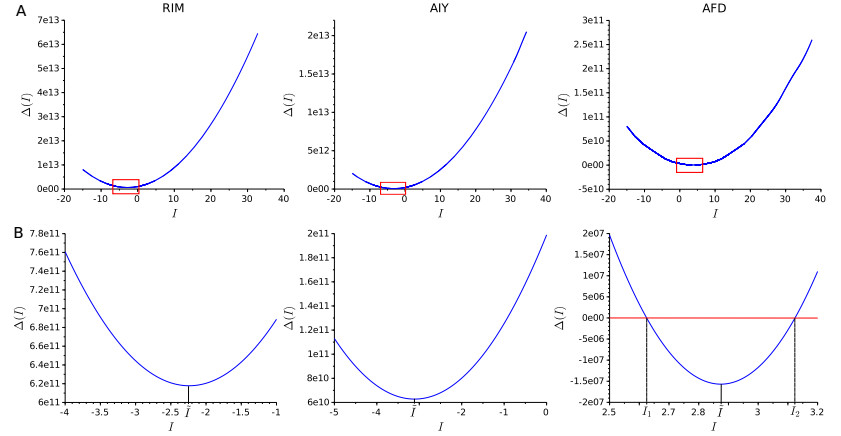




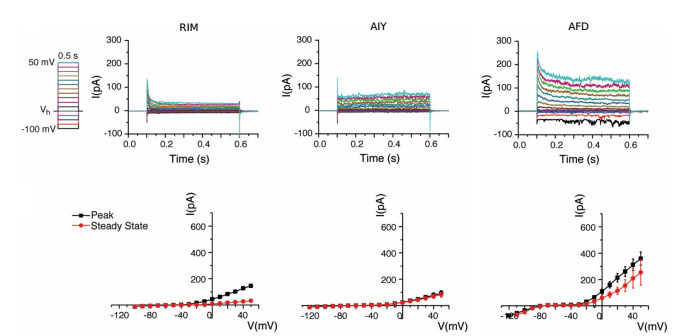



 DownLoad:
DownLoad: